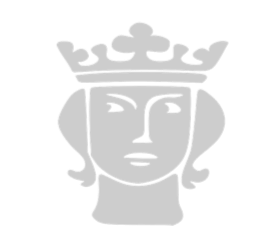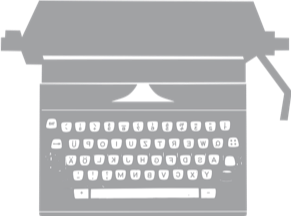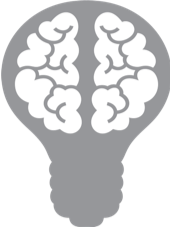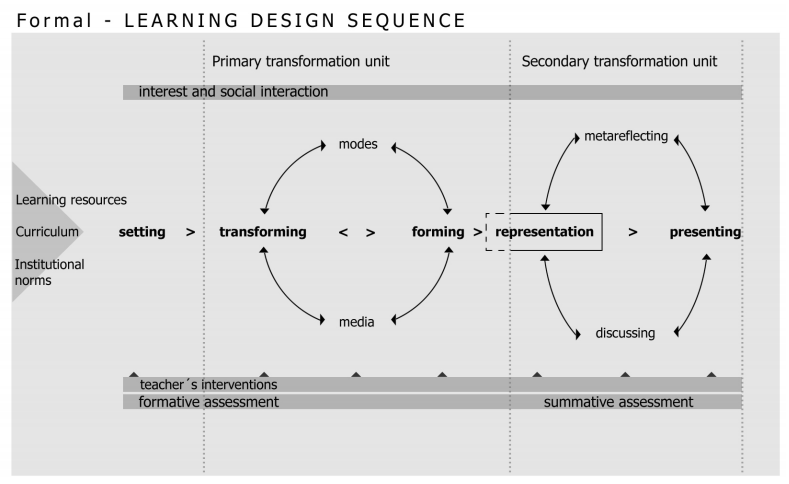This is an update regarding the roles my students perform in class. My previous posts are from 2014 and 2016, this is an extract from a published paper (just in Spanish): Castañeda, L. (2019) Initial teacher training in the educational use of technology, a pedagogical proposal. Quaderns Digitals, 89. 1-49. http://www.quadernsdigitals.net/index.php?accionMenu=hemeroteca.VisualizaArticuloIU.visualiza&articulo_id=11517 pages 31 and following.
I hope it would be interesting
“The roles that articulate the work of the groups in my course have changed over the years. They are designed to be exercised in a unipersonal way (with some exceptions especially in the figure of the star), they are assigned discretionally by the members of the team using the method that they consider more appropriate but with some restrictions, namely: first that the assignment of the roles is valid for one week, that the same role can only be exercised for one task at a time, and that they must rotate so that all the members of the team go through each of the roles, at least, once during the four-month period.
The main function of the roles has to do with the development of the general competences of the degree, which in turn are closely connected to the transversal competences of the University of Murcia, corresponding approximately in this way:
-
Role of Facilitator-Administrator:

Considered as a role of help to the conformation and functioning of the group (Johnson et al., 1999), and with evident inspiration in the roles of moderator in some of the proposals (De Wever et al, 2010), the person in charge of performing this role acts as the group leader, being responsible for distributing the task, mediating in conflicts, making sure the work is done, motivating and encouraging the work of their colleagues. In addition, this role is in charge of maintaining the blog and all the group’s sites on the social web, as well as reviewing format, spelling and grammar associated with the group’s work.
-
Role of Historian-Chronicler:
He is in charge of making a weekly chronicle of what has happened during the week in the group. He/she is in charge  of documenting everything that happens in the group, having the freedom to do his/her task in the format he/she considers most appropriate, and the students are encouraged to “tell the stories” of their groups using the variety of formats allowed by ICT. It is hoped that such a chronicle can serve, in addition to the teacher’s obvious process evaluation purposes, the group as a field notebook and record that will enable them to make decisions about whether to maintain or modify their own internal work dynamics.
of documenting everything that happens in the group, having the freedom to do his/her task in the format he/she considers most appropriate, and the students are encouraged to “tell the stories” of their groups using the variety of formats allowed by ICT. It is hoped that such a chronicle can serve, in addition to the teacher’s obvious process evaluation purposes, the group as a field notebook and record that will enable them to make decisions about whether to maintain or modify their own internal work dynamics.
This role, which we can include within the roles that “help the group to function” (Johnson et al., 1999), insofar as it allows them to maintain a record of activities that it is hoped can be useful for monitoring the group’s work.
In addition, the role of the historian is to explore sites of interest that may be of interest either for the development of the subject or for the training of class members as teachers. The commitment includes references in the blog, at least, a website of WITHIN the class and another one of OUTSIDE the class, making reference to the reasons of the election and also leaving a comment in the site that is an object of review.
-
Role of Curator:
 The curator is in charge of compiling and organizing in a schematic way all the sources of information that the group has used for the development of the activity. In addition, he or she must be in charge of sequencing the documentation indicating the process carried out and linking and referencing (according to APA standards) this documentation in a schema (mind map) so that this mechanism allows students to make a representation of a part of the cognitive structure they have set up for the specific task (McKeachie et al., 1987, p. 15).
The curator is in charge of compiling and organizing in a schematic way all the sources of information that the group has used for the development of the activity. In addition, he or she must be in charge of sequencing the documentation indicating the process carried out and linking and referencing (according to APA standards) this documentation in a schema (mind map) so that this mechanism allows students to make a representation of a part of the cognitive structure they have set up for the specific task (McKeachie et al., 1987, p. 15).
We can also include this role within the roles that “help the group to function” (Johnson et al., 1999), although sometimes it assumes a unifying role of the work of all (summarizer of (De Wever et al., 2010), it is also true that its role does not include a true synthesis, but a compilation of resources that are expected to be useful beyond the subject itself.
-
Role of the Translator
Inspired by roles such as theoritician from other proposals such as that of De Wever et al. (2010), this role can be  classified by its function, among those that help students to formulate what they know and to integrate it, as well as those that aim to encourage students’ thinking and improve their reasoning (Johnson et al., 1999).
classified by its function, among those that help students to formulate what they know and to integrate it, as well as those that aim to encourage students’ thinking and improve their reasoning (Johnson et al., 1999).
The translator is in charge of defining each week the 5 central terms related to the subject that have been worked on in the activity. This role takes on a special relevance since the student has to be in charge not only of selecting which are the 5 substantive topics that are talked about that week but also of reworking and building those key terms. In the role instructions, the students are given a special emphasis on the need to “dialogue” with the authors, referring specifically to the possibility of “borrowing” someone else’s words, but making them flow in our discourse, properly referenced.
But, in addition, in this role a specific question is included that will have to be included in the post to greater of the 5 terms and that is referred to which are the less brilliant sides of the thematic, methodology or tool that has been approached in the task and which decisions on which aspects, should be made explicit to obtain the best possible implementation scenario or, at least, to avoid unwanted influences in the educative processes. This question is intended to elaborate on the specific content of the Subject Competence: “critical analysis of educational technology”.
-
Role of Analyst:
 Inspired by the role of Analyst described in some of the works referred to in Strijbos and De Laat (2010), the analyst is the role responsible for making the final reflection of the work and also make the weekly evaluation of the performance of group members.
Inspired by the role of Analyst described in some of the works referred to in Strijbos and De Laat (2010), the analyst is the role responsible for making the final reflection of the work and also make the weekly evaluation of the performance of group members.
The performance evaluation is carried out following a generic rubric, in which the analysts are expected to assess the contribution of each of the group members, and. at the end of the workweek, each of the analysts must include this assessment (numerical and qualitative) in an ad-hoc online questionnaire.
In addition to this assessment, as we have said before, the analyst is in charge of making the final reflection of the team, in which he/she should include comments on what they have learned about the contents of the subject, as well as about the group work and the exercise of being a teacher in general. To increase the quality of these reflections, the first week of work includes a workshop with the students dedicated to reflection and the different levels of reflection that they should handle during the course, so that they know what is expected of them and value the importance of interconnecting ideas by attributing causes to their statements, proposing dialogical relationships and above all assuming with a critical sense, what the contribution of their activity is to their learning process, in the educational and social framework in which they are developing.
This is surely one of the most important roles in the job since he is in charge of reflecting on the work, paying attention to the work done in the other roles, seeing what aspects they have dealt with, thinking about how they have worked and agreeing with their colleagues on a reflection on what they have learned. In the end, he is in charge of making explicit and agreeing on the process of reflection and meta-cognition of the team.
-
Role of the Star:
 The role of the star is to present to the whole class the final product of the weekly tasks, attending to the requirements specified by each task.
The role of the star is to present to the whole class the final product of the weekly tasks, attending to the requirements specified by each task.
It is important to emphasize that, although all the members of the group should be involved in the achievement of the task, it is always the star that each week showed a higher level of interest. During the development of the subject, we have observed how it is the role in which more information is sought for the final achievement of the task.”
Extract from Castañeda, L. (2019) Initial teacher training in the educational use of technology, a curricular proposal. Quaderns Digitals, 89. 1-49. http://www.quadernsdigitals.net/index.php?accionMenu=hemeroteca.VisualizaArticuloIU.visualiza&articulo_id=11517 pages 31 and following

 than 75 tools and I hope that, having incorporated it into the way they work with technology, it will be useful as a revival of their approach to technology
than 75 tools and I hope that, having incorporated it into the way they work with technology, it will be useful as a revival of their approach to technology
 of documenting everything that happens in the group, having the freedom to do his/her task in the format he/she considers most appropriate, and the students are encouraged to “tell the stories” of their groups using the variety of formats allowed by ICT. It is hoped that such a chronicle can serve, in addition to the teacher’s obvious process evaluation purposes, the group as a field notebook and record that will enable them to make decisions about whether to maintain or modify their own internal work dynamics.
of documenting everything that happens in the group, having the freedom to do his/her task in the format he/she considers most appropriate, and the students are encouraged to “tell the stories” of their groups using the variety of formats allowed by ICT. It is hoped that such a chronicle can serve, in addition to the teacher’s obvious process evaluation purposes, the group as a field notebook and record that will enable them to make decisions about whether to maintain or modify their own internal work dynamics. The curator is in charge of compiling and organizing in a schematic way all the sources of information that the group has used for the development of the activity. In addition, he or she must be in charge of sequencing the documentation indicating the process carried out and linking and referencing (according to APA standards) this documentation in a schema (mind map) so that this mechanism allows students to make a representation of a part of the cognitive structure they have set up for the specific task (McKeachie et al., 1987, p. 15).
The curator is in charge of compiling and organizing in a schematic way all the sources of information that the group has used for the development of the activity. In addition, he or she must be in charge of sequencing the documentation indicating the process carried out and linking and referencing (according to APA standards) this documentation in a schema (mind map) so that this mechanism allows students to make a representation of a part of the cognitive structure they have set up for the specific task (McKeachie et al., 1987, p. 15). classified by its function, among those that help students to formulate what they know and to integrate it, as well as those that aim to encourage students’ thinking and improve their reasoning (Johnson et al., 1999).
classified by its function, among those that help students to formulate what they know and to integrate it, as well as those that aim to encourage students’ thinking and improve their reasoning (Johnson et al., 1999). Inspired by the role of Analyst described in some of the works referred to in Strijbos and De Laat (2010), the analyst is the role responsible for making the final reflection of the work and also make the weekly evaluation of the performance of group members.
Inspired by the role of Analyst described in some of the works referred to in Strijbos and De Laat (2010), the analyst is the role responsible for making the final reflection of the work and also make the weekly evaluation of the performance of group members. The role of the star is to present to the whole class the final product of the weekly tasks, attending to the requirements specified by each task.
The role of the star is to present to the whole class the final product of the weekly tasks, attending to the requirements specified by each task.
